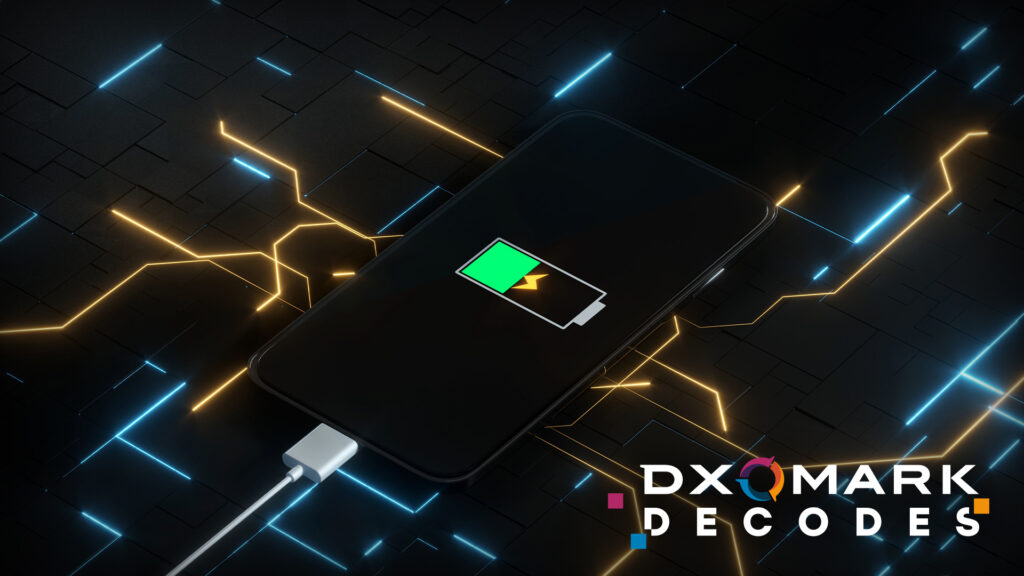So you just unpacked your new smartphone from its box, and as is common these days, it didn’t come with a charger, but it came with a USB-C cable, or maybe not even the cable. You begin to wonder whether you can safely use a charger from your other smartphones, or whether you should buy one from the smartphone brand or just buy an off-brand high-watt charger that advertises super-fast charging times.
Sound familiar? Although you might have lots of cables and chargers that are compatible, you’ll find that smartphone charging compatibility is far more complex than just plugging in any charger and cable that fits. In this article, we’ll try to shed some light on this topic.
Charging compatibility made headlines recently because of a new European Union law that goes into effect in the fall of 2024 that requires electronic devices sold in the EU to adopt the USB-C charging cable and port. But the law goes beyond that.
Manufacturers will also have to provide relevant information about charging performance, for example, power requirements and fast charging support. This information will make it easy to work out if an existing charger will work with your new device and will help to select a new compatible charger if required. This law aims to limit the need to buy new chargers and to allow for the reuse of existing chargers, thus cutting down on waste.
How chargers and smartphones interact
If every smartphone uses the same connector, will charging be the same for every smartphone? Even though the connector is the same, the way a device will charge will be far from common because of the wide variety of charging protocols that exist.
What is a charging protocol? The charging protocol is a set of rules and specifications chosen by either OEMs or industry organizations like the USB Implementers Forum (USB-IF), which manages the energy delivery from the power source to the rechargeable device. The charging protocol normally specifies the voltage and the current to be adopted during the charging process, as well as the safety features and the communication between devices. Charging protocols are often standardized by industry organizations to ensure the compatibility between devices and chargers.
USB Power Delivery (USB-PD), is a universal charging protocol standardized by the USB-IF. There are four versions of the USB-PD standard, with the latest version 3.1 (adopted in 2021), that offer fast-charging capability all the way up to 240W (currently only for laptops). The same charging protocol supports different connector types, for example: USB type-C, Apple lightning, and others. The advantage is that standard protocols offer more compatibility.
However, some manufacturers have implemented their proprietary charging protocols that allow them to reach high levels of charging power with their own devices, but not with devices from other brands. The EU ruling will require that manufacturers of proprietary charging protocols also support the universal USB-Power Delivery protocol for better inter-compatibility.
Complexities of smartphone charging
Smartphone battery charging is not a linear process in which the charging power remains at a constant level from 0% to 100%.
The following graph illustrates the charging power evolution during the charging process, along with the battery percentage displayed on the screen. The 80% of full charge capacity, 100% shown on the display, and the full charge are also pointed out in the graph. The dark line shows the varying levels of charging power during the charging, with the peak charging power being reached just under 42W in the first few minutes of the charging. The peak charging power heats the battery very fast, so it’s reasonable that the peak charging power only lasts for a few minutes. But the thing to keep in mind is that the battery keeps charging but at a progressively reduced charging power. In the graph below, we still see a few peaks, but they are between the 30W and 40W levels.
Each manufacturer decides at which point to display a battery charged at 100%, which indicates that the battery is nearing a full charge.
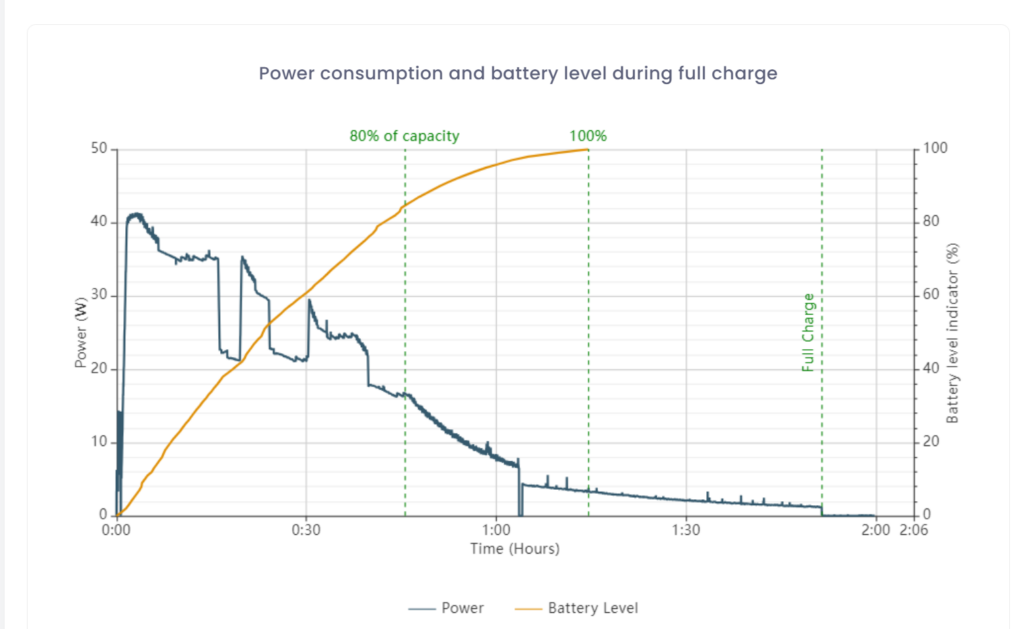
In the following chart, we see just how two superchargers work. The maximum supercharge of 150W was nearly reached and 240W was achieved but only once during the charge duration, and only at the very beginning of the charge. This shows that even the fast chargers usually only peak at the advertised speed for a moment before charging at lower speeds to protect the device and battery.
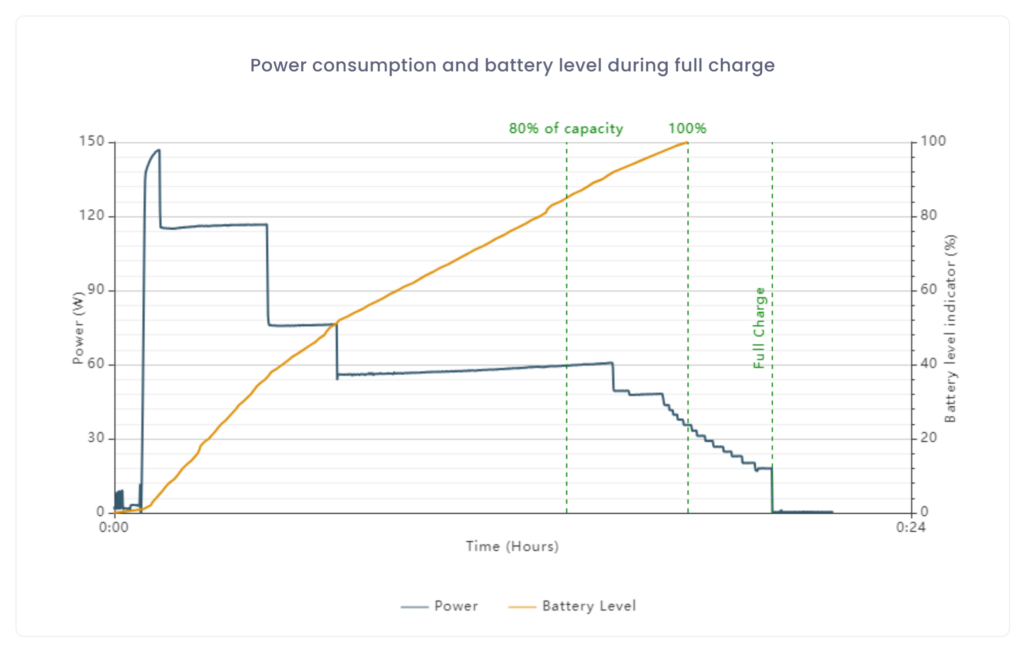
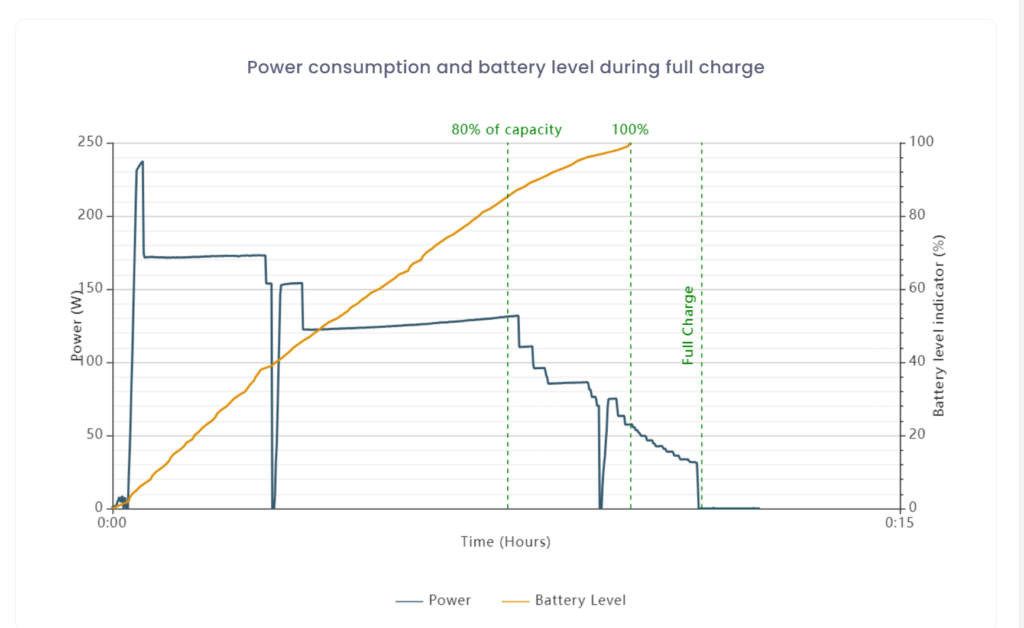
DXOMARK provides this detailed graph in every smartphone battery test result.
Charger compatibility
Earlier this year we tested the cross-compatibility of chargers between various brands and published our results in an article. In summary, our findings showed that a proprietary fast charger of 240W could achieve that level of charging with the smartphone it was specifically made to work with (if only for a brief moment as seen earlier). But if used on another brand, the charging power might only reach up to 45W with the USB-PD protocol, as both devices revert to the protocol that is best compatible between them.
Testing the iPhone 15 Pro Max
Since Apple recently introduced the USB Type-C port with the iPhone 15 series, we were eager to test non-iPhone chargers and cables with the iPhone 15 and iPhone 15 Pro Max. We ran tests to verify the compatibility between the new iPhone 15 series with multiple chargers and cables from different brands, and third-party chargers including original iPhone ones.
Our results showed that the latest iPhone 15 series was compatible with most third-party chargers and other brands, with no significant difference in charging power. The iPhone 15 Pro Max drew around 28W to 30W maximum during charging, while the iPhone 15 drew around 22W.
For example, in one test, we charged the iPhone 15 Pro Max with a 30W iPad adapter, using USB-C cables from other phone brands. Our results showed that the charging power was constant at 27.6W.
We saw some slight variation with the same cable (from Apple) but chargers from different brands or third parties, as seen in the following graph. What stood out from these results was that the iPhone 15 Pro Max reached a peak charging power of 29.4W with a 45W third-party charger, a bit higher than the 27.6W charging power reached when using the Apple brand cable and charger combination.
It’s also interesting to note that a superfast 160W charger did not yield higher readings than the 45W charger. But we noticed that the iPhone 15 series achieved a peak charging power with certain Android chargers supporting USB PD 3.0 that was slightly higher than with an original iPhone charger.
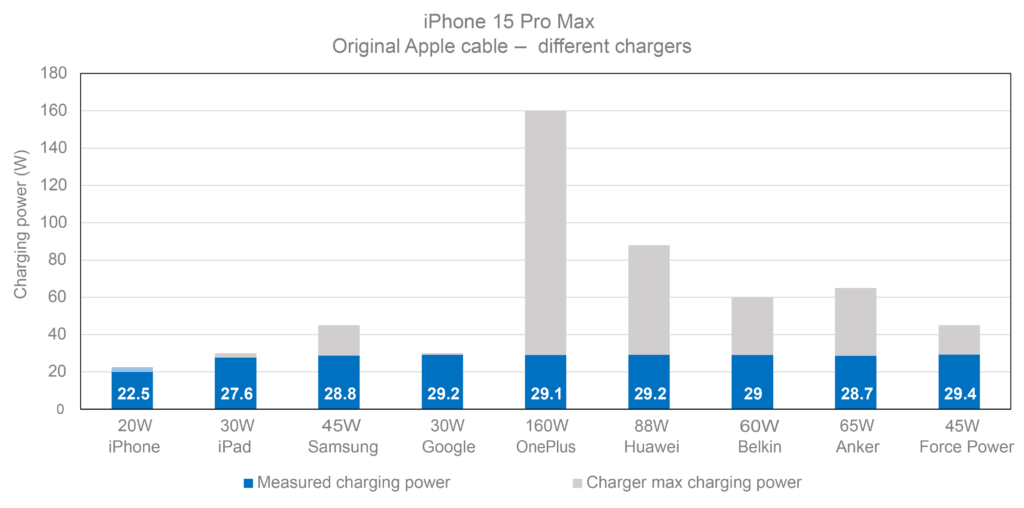
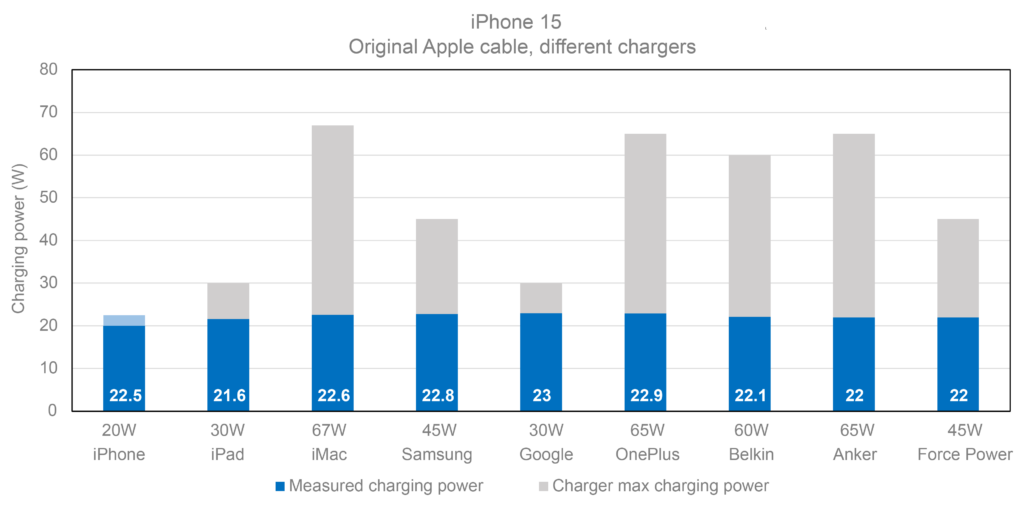
We also tested the iPhone 15 Pro Max charging compatibility with third-party cables and chargers from the same brand. The iPhone 15 Pro Max was able to charge with most brands.
This illustrates the complexities of the overall charging process. All the components of charging — the adapter, the cable and the phone — have to recognize each other to work together if the charge is to achieve its highest power possible.
Conclusion
As you can see, there’s much to consider when choosing the right charger and cable for your smartphone. In the case of the iPhone 15 Pro Max, the device did not surpass the 30W with any charger, even one that delivered a supercharge. The safest bet is to stick with the smartphone manufacturer’s charger and cable, but that doesn’t mean that third-party should be entirely dismissed. As we also saw with the iPhone 15 Pro Max, some third-party chargers delivered a little bit more charging power to the device than Apple’s charger.
The move to standardize USB-C PD is a big step in the right direction, even if all chargers or cables won’t supply the same amount of charging power to different smartphones. As our tests showed, even proprietary super-fast chargers only peak at their highest charging power briefly, even for their own devices; this is to be expected. Nevertheless, the requirement to support a common and universal protocol will ensure that regardless of which phone you have or which cables and chargers you buy, you will be able to safely charge your phone.
We hope that this article has given you a better understanding of the complexities involved in smartphone battery charging. Watch the video on cross charging:
Be sure to check out more content in our Decodes series, where we try to explain concepts or dispel myths related to technology, particularly in smartphones and other consumer electronics.


